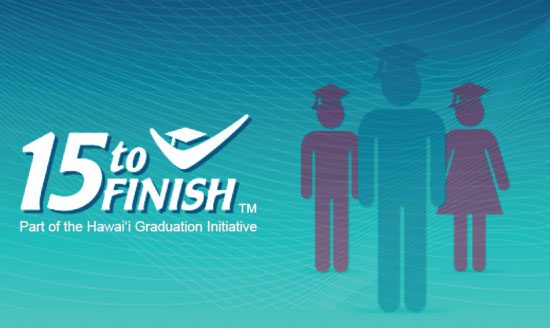
Following the launch of STAR GPS last November, there has been a mixed response amongst faculty and students at Windward Community College.
Alissa Leone, a psychology student who transferred from WCC to UH Mānoa last semester, found the new registration system to be helpful throughout the process.
“I think STAR GPS is totally innovative,” Leone said. “Compared to the old system, it actually works. For once, I didn’t have to work anything out on paper. Both my counselor and me could edit my courses without having to meet in person. I think it has made registration a lot easier than it used to be.”
The new system aims to give each student an overview of his or her educational path in order to create an easier and more efficient way of registering and staying organized.
The tools allow students to see what courses will be necessary to earn their degrees and how they can optimize their course loads each semester for the most success. Students have a clear look at the time it will take them to graduate and potential outcomes if they were to transfer to another campus within the UH system or select a class outside of their major.
STAR GPS has not only been a big help to students but to faculty and administrators as well.
Amy Rozek, vice chancellor of student affairs who is in charge of STAR GPS, has found one of the biggest benefits to be the accessibility of the system.
“Since STAR GPS was built by UH, we have had the ability to continually make improvements relatively quickly,” Rozek said. “STAR GPS provides WCC with information about what classes students need for their programs of study. For example, in December we received a report that showed several students needing to take HWST 270: Hawaiian Mythology. The dean and department worked together to add another section of this class for our students.”
According to Rozek, STAR GPS system administrators surveyed students as they began using the system. Rozek said, “The majority of students reported being either extremely satisfied or very satisfied with their overall STAR GPS experience.”
There have been a few obstacles for students while adjusting to the new system. Counselor Kathleen Zane said some students, particularly those who were part-time or needed developmental courses (below 100 level), found the GPS Pathway semester blocks “confusing” because they thought they were required to take the courses as listed and in the specified semester. She said, “The Pathway is set up for 15 To Finish, and perhaps it seemed intimidating to those who were electing a different way of proceeding through the degree. Although there is a video instructing students on navigating the system, it may have seemed like viewing it was more of an obstacle than a helpful device.”
For WCC student Deborah Higa, STAR GPS doesn’t offer enough flexibility.
“STAR GPS can be beneficial to students because it helps them map out their educational plans at one UH campus,” she said. “However, if you’re like me and take classes at multiple campuses, the system does not take that into consideration and says that the classes I take outside of your home campus is not in your plan. The system also doesn’t take into consideration the fact that you might have failed a class. If the program were more flexible and took different variables into consideration, I would be more enthusiastic about it.”
For Andrew Simeona, secretary of The Associated Students of the University of Hawai‘i -WCC and student life coordinator, STAR GPS has been a major improvement on the previous system.
“It really revolutionized how to register for classes,” he said. “It is really easy and really simple … I’ve helped out a couple of students here and there, and they just loved it compared to the old way.”
The STAR GPS registration system, which won two president’s awards from Complete College America last fall, went into effect just in time for Spring 2017 registration.
by Ian Roesch, Ka ‘Ohana Co-Editor in Chief





